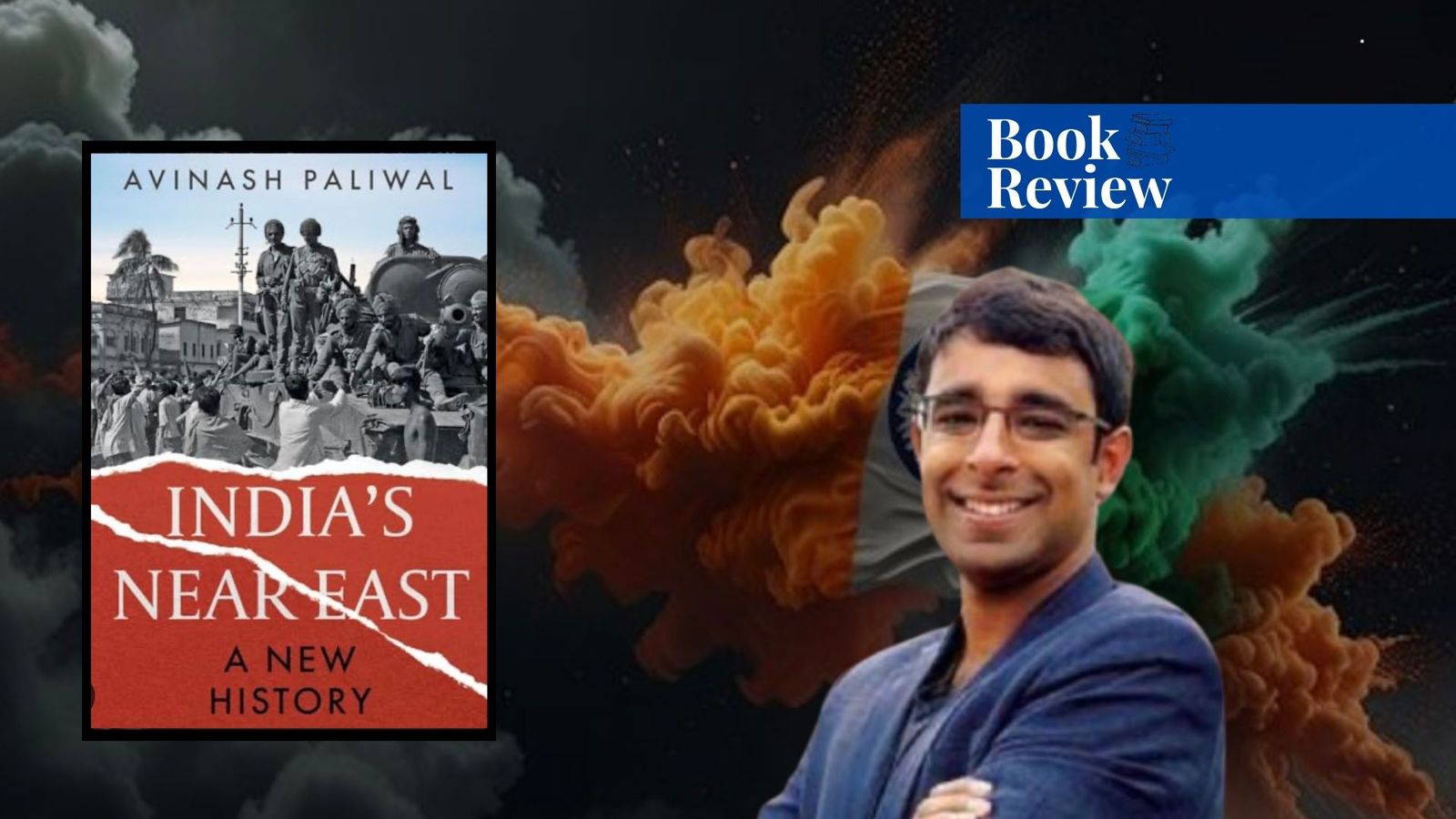Stretching from great mountains to vibrant borders of Southeast Asia, India’s northeast frontier is much more than an area of land; it forms a very integral piece of India’s story and strategy. Combining historical insight and sharp analysis, Avinash Paliwal uncovers why the northeast borderlands of India both form a challenge and opportunity in determining the future of India. The book “India’s Near East: A New History” revolves around India’s strategic, diplomatic, and internal challenges along its eastern frontier, including Bangladesh, Myanmar, and the northeastern states of India like Arunachal Pradesh, Assam, Manipur, and Nagaland. It explores the geo-political importance of the region, examining India’s “Act East” Policy and how this area has become an integral part of India’s overall foreign policy considerations, especially regarding its great-power rivalry with China.
The Author-Avinash Paliwal
The author, who is a Deputy Director of the South Asia Institute at SOAS University of London, explains the tensions between the dynamics at local levels and India’s strategic goals. Having expertise in foreign and security policy studies with a particular emphasis on Afghanistan, Myanmar, and the South Asian region, he examines India’s policy towards its northeastern borders and neighbouring nations through a thorough historical examination, highlighting insurgencies, cross-border migrations, and the limits of India’s regional diplomacy. The author has used a variety of sources, such as documents from the National Archives of India and interviews with officials, social activists, and the media community, to structure his arguments and viewpoints.
Themes of India’s Near East: A New History
The book’s narrative is based on four interrelated themes that influence India’s Near East.
Theme 1: Identity Politics
The first theme is that of identity politics. This theme explores how different types of identities, like ethnic, communal, and ideological, drive political mobilization in India’s Near East. It presents a picture of various forms of nationalism. This makes the complex nature of identity-driven political conflicts in India and other neighbouring countries such as Myanmar and Bangladesh (formerly East Pakistan) easy to understand. These conflicts have shaped history; therefore, they also contribute to the regional impact on events as significant as the Naga revolt, Assam’s anti-foreigner movement, and the Mizo insurgency. It brings out how identity politics has played a central role in nationalism and postcolonial state-building, steering not merely the affairs within but also the broader regional dynamics.
Theme 2: Cross-Border Migration
The second theme revolves around cross-border migration. The book views it broadly, including major events like the mass displacement during the 1947 partition, the exodus of Indians from Burma, and the 1971 Bangladesh refugee crisis. These movements are critical to the region’s social, political, and economic dynamics. The book illuminates how migration structures debates within politics, especially within Assam, where migration from Bangladesh has had long-standing political frictions. India’s policy towards cross-border migration is selective, where domestic and international strategies govern decisions on either side. The book provides insight into India’s approach toward such matters, tracing an informal refugee policy and how they manage each situation uniquely. It portrays the dynamics between migration, politics, and identity in the region.
Theme 3: Economic Challenges
The third theme is based on the link between the economic challenges of India’s northeast region and migration and identity politics. The author is of the view that the partitions of 1937 and 1947 worsened economic constraints in the region because they cut its links to the rest of India and its eastern neighbours. The author further points out that India’s initiative to improve regional connectivity with Southeast Asia has been deterred by security concerns like the emergence of illegal economies, for example, drug trafficking. The book asserts that the connection between the licit and the illicit economies entangles the developmental process of the region with the politics of the centre and local corruption, which complicates any effort to break free of this cyclical trap. In turn, attempts at improving connectivity through schemes like the “Act East” policy continue to see prospering illicit trade activities disrupting economic progress.
Theme 4: State Affairs and Contradictions
Paliwal explains how the Indian government’s actions in the northeast have caused conflict and contradictions, particularly when attempting to manage the region’s different cultures, in the fourth theme of his book. The primary argument is that India’s state-building initiatives have frequently clashed with local customs and governance systems, resulting in political and social instability. For example, in Naga territories, the Indian government implemented official state structures while ignoring traditional village councils led by elders. This resulted in a power struggle between state officials and local leaders, intensifying corruption and bloodshed.
Sections of India’s Near East: A New History
Section 1: Solidarity
The book is divided into three parts and ten chapters. The initial section is titled “Solidarity,” and it covers the period from 1947 to 1970. This section concentrates on Indian efforts to address post-independence challenges in its east region. The early years saw the Indian government undertake monumental efforts in aid of Burma. Yet in both Burma and Pakistan, democratic experiments were brought to a close in 1958 when military rule took precedence over both governments. As regional tensions mounted, the approach of India shifted, especially after the defeat in the Chinese 1962 war that emphasized a “two-and-a-half front” security dilemma: China and Pakistan on one hand and northeastern insurgencies on the other. It reflects India’s changing strategies in the region, which were affected by cross-border insurgencies, food crises, and pressures of Cold War politics.
Section 2: Security
The second section, titled “Security,” is devoted to the period from 1971-90. This section centres around India’s changing security dilemmas against the backdrop of the ongoing conflict with Pakistan as well as rivalry with Beijing. Incidents during the 1960s prompted India towards more interventionist policies that, in the end, would see India supporting East Pakistan’s independence in 1971.
This period included India alternating between supporting military leaders like Ne Win in Myanmar and pro-democracy figures such as Aung San Suu Kyi. Meanwhile, as the Cold War was coming to a close, Indian support for democratic movements in the region failed largely to meet the expectations in the context of complex security dynamics that continued to mark its Near East policy.
Section 3: Connectivity
The third portion of the book is labelled “Connectivity,” which covers the period between 1990 and 2024 as it traces the way in which India transitioned from “Look East” in 1991 to “Act East” in 2014. According to Paliwal, the transition was an important tactical realignment of India’s regional policy, involving not just changes in Indian-Myanmar military relations but also accommodation of sour relations with the Bangladesh regime under Khaleda Zia. The section illustrates how India’s near-eastern connectivity continues to adapt to complex regional dynamics in this context.
A notable feature of this book is that it excels in its historical context. Paliwal takes one back to the colonial times under the British and into the post-Partition period. It is rich historical material for the present-day geopolitical realities. This enables the reader to understand why many of the regional complexities have been there for ages-long ethnic conflicts and how legacies of partition continue to dominate India’s strategic choice to date. The tone is objective and often critically structured in regard to India prioritizing stability over economic opportunity.
Overall, this book is an outstanding addition to the existing literature as the author’s extensive knowledge of the subject provides readers with a thorough comprehension of India’s Near East. Paliwal offers a balanced view, accepting India’s strategic goals and the problems and contradictions within those policies. This book is a must-read for scholars of international relations, peace and conflict studies, and anyone who has an interest in South Asia and geopolitics.
If you want to submit your articles and/or research papers, please check the Submissions page.
The views and opinions expressed in this article/paper are the author’s own and do not necessarily reflect the editorial position of Paradigm Shift.
The author is a graduate of Bachelors in IR from National Defense University, Islamabad. She has previously interned with Islamabad Policy Research Institute and Army Institute of Military History. She can be reached at [email protected]



